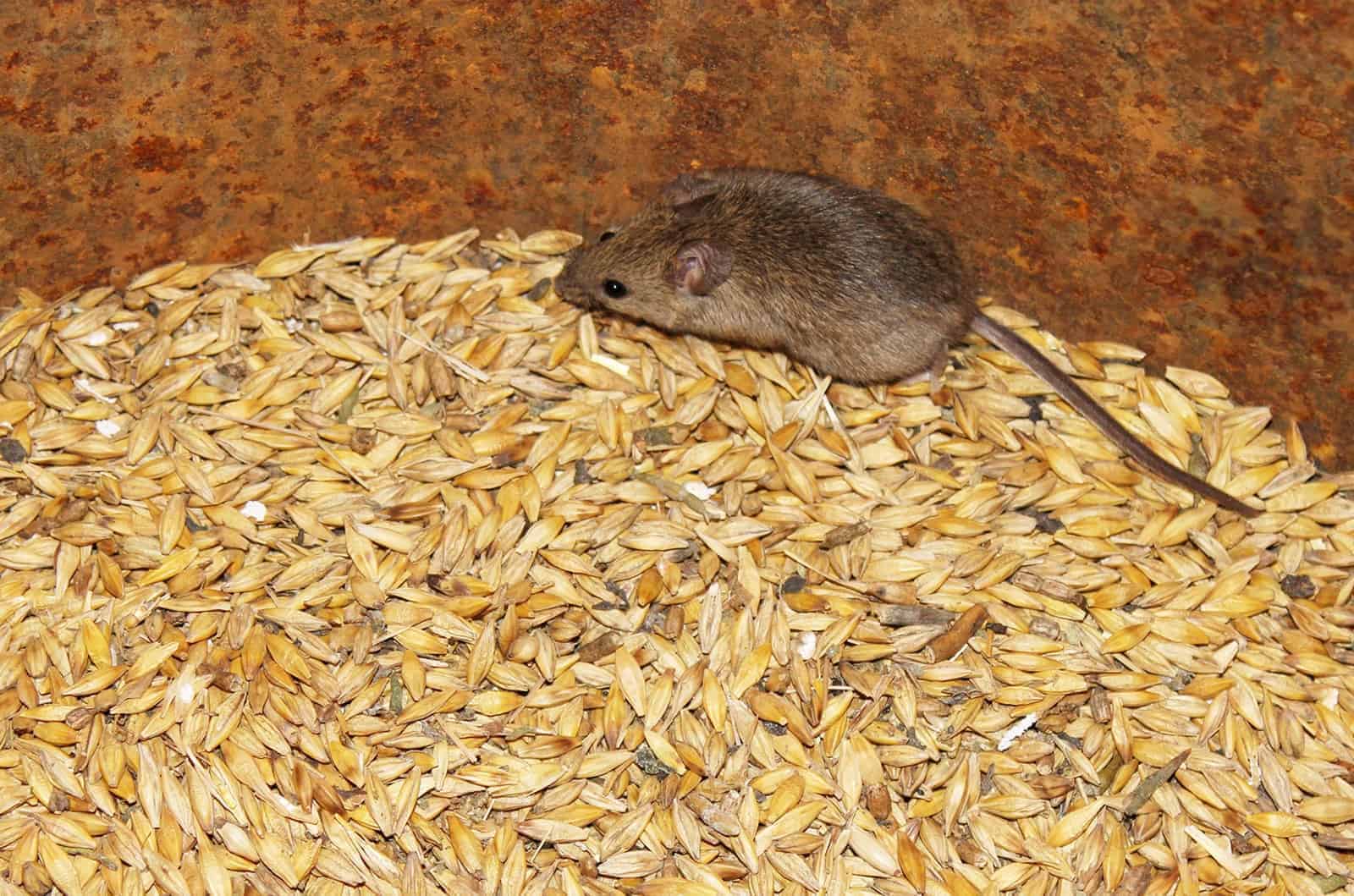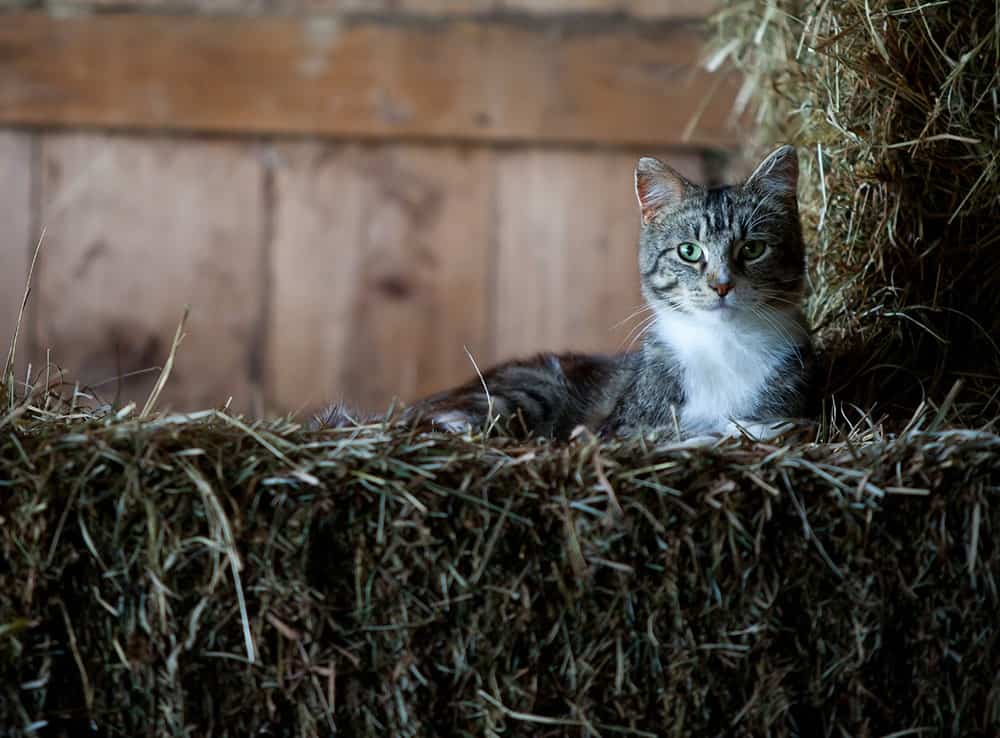Keeping Rodents Out of Your Feed Room
- Posted by Clair Thunes, PhD

With cold weather coming and native food sources becoming scarce, the attraction of food and bedding provided by our feed and tack rooms makes these unwanted guests almost a given. However, there are several important reasons why you should not accept the presence of these critters in your feed rooms.
The No. 1 reason is disease. Rodents are known to carry several diseases transferable to both horses and humans. Their feces and urine can contaminate feed with diseases such as salmonella, leptospirosis, and trichinosis. Rodents also carry fleas, mites, and ticks. It is crucial to keep all feed and supplements in rodent-proof containers such as metal trashcans with secured lids. Plastic and wood containers are vulnerable to chewing and it’s not unusual to find a hole neatly chewed into the bottom of a plastic trash.
I often see sacks of feed standing unprotected in feed rooms that seem to beg rodents to tear them open. Check sacks of feed for holes when purchased and decline any that appear to have holes possible caused by rodents. Dispose of any feed that becomes contaminated with rodent feces during storage.
Feed room hygiene is important. Be diligent about sweeping up any dropped feed that would otherwise provide easy pickings and dispose of it in a secured metal container labelled as trash. You might want to post signs to remind others to do the same. On a regular basis pull cans away from the wall and thoroughly sweep the feed room floor.
Beyond the risk of disease, a colony of rats can consume surprisingly large amounts of feed: A mature rat consumes an estimated ounce of feed a day. This doesn’t sound very much, but keep in mind that it has also been estimated that for every rat or mouse you see there are 25 more not far away. It is also worth noting that rats can have up to five litters a year with up to 14 young in a litter and reach sexual maturity in five weeks. According to a recent article in the New Scientist, a single pair of rats could multiply to a population of 15,000 in a year. With all these hungry mouths stealing an ounce of feed a day, a modest-sized rodent colony can eat their way through sacks of feed in a year.
After ensuring that all feed is stored securely, the next step is to secure the room where feed is kept. If you can keep rodents out of the feed room they won’t be able to access those feed spills that do occur and don’t get swept up. You might think that you don’t have any obvious holes that would allow rodents access, but think again. A mouse only needs a hole a quarter inch in diameter to gain entry and a small rat can fit through a hole the size of a quarter! You can temporarily plug holes with with steel wool but ultimately should plug them with caulk. Windows and doors need to shut tightly with no gaps around the frame. These same rules apply for tack rooms.

In my experience a good terrier or other rat catching dog will let you know when and where you have rodents, too.
Traps are also useful. Set along walls were rodents often run as well as near holes (be careful to not put them in places where pets or children might set them off). My preference is for either the traditional spring traps or the newer electronic rat traps. I do not advocate the use of poison, because you can’t be sure where poison will end up. Too many barn owls and other predators are killed due to consuming poisoned rodents.
Other measures you can take to reduce the likelihood of these vermin from taking up residence is to keep blankets, saddle pads, and spare equipment stored in rodent-proof containers. These pieces of equipment are sought after as bedding material and nesting sites by industrious rodents.
By keeping your feed and tack rooms clean and tidy, all feed and equipment securely stored, and having traps and possibly a barn cat available you should be able to minimize the potential damage from unwanted rodents. These efforts will save you money in lost feed and will potentially save you and your horse from contracting a number of unpleasant and potentially life-threatening diseases.

Written by:
Clair Thunes, PhD
Related Articles
Stay on top of the most recent Horse Health news with
















2 Responses
I enjoy reading your columns and appreciate the depth of your knowledge and experience that you show in all of your articles. Having said that, I would like to make some minor points. Strictly speaking the feces of rats contaminates the feed with pathogens and not with diseases. According Robert Sullivan’s book on rats, they can consume 3-4 ounce/feed/day. Based on my reading, most cats catch only juvenile rats and after their first encounter with a fully grown adult rat they tend to avoid them. However, most dogs are much better at killing rats; according to some sources their major role during the Middle Ages in Europe was catching rats.
I buy my grain in bulk. put it in two non-working chest freezers and mice just can’t get in. Of course with a dozen barn cats a mouse doesn’t stand a chance.